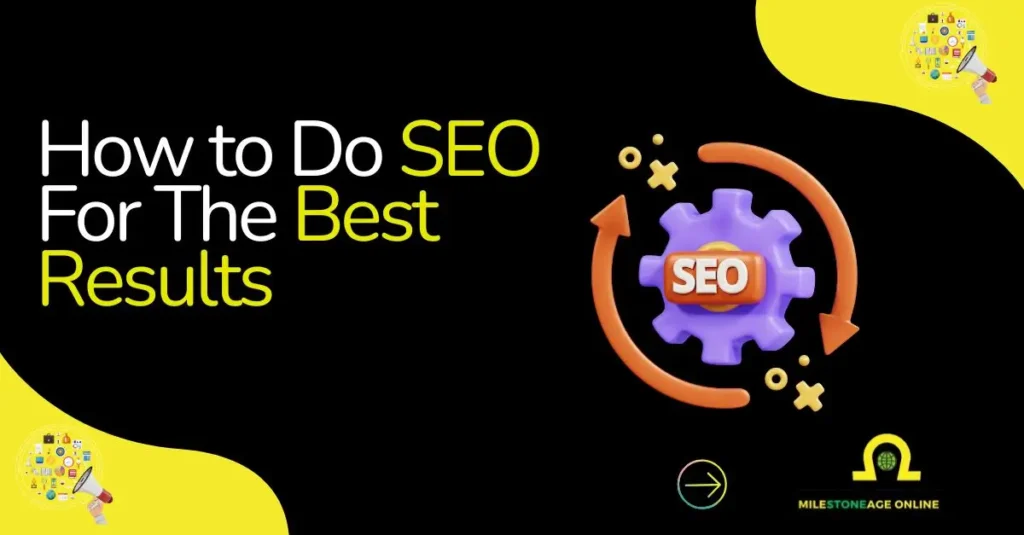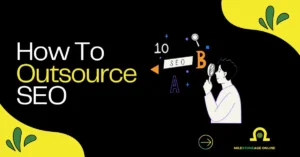EO, or Search Engine Optimization, is about making websites easier to find. It works by improving structure, content, and trust signals for search engines.
- Keyword research – choose words users actually search for
- On-page optimization – use proper headings, meta tags, and clear URLs
- Technical health – keep pages fast, mobile-friendly, and error-free
- Content strategy – write relevant, answer-focused articles
- Link building – earn trusted links from reliable websites
Today, Answer Engine Optimization (AEO) ensures visibility in AI-driven summaries.
Introduction
SEO, or Search Engine Optimization, is how websites show up when people search online. It is about making your site easy to find, clear to read, and trusted by search engines.
If you are new, this guide will show you simple steps. If you already work in digital marketing, it will refresh your approach with updated ideas.
With AI overviews and generative tools shaping search, knowing “what is SEO and how it works” matters more than ever. Think of this as your roadmap to smart SEO marketing, built for both people and machines.
What Is SEO & Why It Works Like Digital Magic
SEO means shaping how search engines view and rank your site. It helps both beginners and marketers in digital campaigns.
What Is SEO and How It Works: A Digital Primer
SEO, or Search Engine Optimization, improves the quality and quantity of website traffic. It works by making pages easier to understand for search engines and more useful for users.
- Technical SEO: improve speed, mobile design, and structured data.
- On-Page SEO: use proper headings, clear titles, and keyword placement.
- Off-Page SEO: gain trusted links and build authority online.
Search engines use algorithms that update often. These updates focus on user relevance and mobile-first indexing. This means sites must load fast, be secure, and provide clear answers.
In short, SEO is about giving both people and search engines the right signals. When done well, it brings steady organic traffic and builds trust over time.
SEO for Beginners (and How to Do SEO for Free)
Starting with SEO can feel simple if you use the right tools. You can do many steps for free with a little time.
Keyword Research
Finding the right words makes content match what people search.
- Free tools: Google Keyword Planner and Search Console show search terms.
- Target phrases: try “search engine optimization example” or “how to do SEO for free.”
- Focus on intent: choose words that match what users want to know.
On-Page Foundations
Good page structure helps both search engines and readers.
- Headings: use H1 for main title, H2 for subtopics, H3 for details.
- Meta tags: add title tag, clear URL, and meta description.
- Alt text: describe images to give search engines context.
Technical Setup
Even without budget, basic tools can keep sites healthy.
- Google Search Console: check indexing and fix crawl errors.
- Google Analytics: measure user visits and traffic sources.
- Mobile check: make sure pages load well on phones.
With these free steps, beginners can start SEO without extra cost. Small actions like keyword focus and clear structure already build a strong base.
SEO: Step-by-Step Digital Marketing Strategy
Good SEO works best when followed as a simple checklist. Each step builds on the other to create growth.
Optimize Your Content
Search engines reward clear and helpful writing. Your content should answer user questions in plain words.
- Write high quality text: keep it original, clear, and focused on answers.
- Target examples: use terms like “search engine optimization example” to guide context.
- Blend LSI keywords: add “How to do SEO in digital marketing” or “SEO marketing.”
- Match intent: always check if your content matches what users expect to find.
Site Structure & Crawling
A clear site structure makes it easier for search engines to crawl.
- Submit a sitemap: share it with Google Search Console for faster indexing.
- Mobile-first design: make sure the site works well on phones and tablets.
- Internal linking: link related pages to guide both users and bots.
- Clean code: remove errors and keep a simple structure for crawlers.
Link Building
Links remain a core part of SEO ranking. They show trust and authority.
- Earn quality inbound links: get them from trusted and related websites.
- Use guest posts: write for other sites to gain referral traffic.
- Avoid spam links: poor links can lower trust and harm rankings.
Local SEO for Small Business Angle
Local visibility drives quick actions. For small businesses, this is a must.
- Google Business Profile: claim and update with address, phone, and hours.
- Reviews matter: ask customers to leave honest ratings.
- Local keywords: add your city or area in headings and descriptions.
- Proven stat: 76% of local searches lead to visits within one day.
Measure & Iterate
SEO works when you track progress and refine the plan.
- Analytics: use Google Analytics to see traffic changes.
- Search Console: track rankings, impressions, and fix technical issues.
- A/B test: compare different headlines or structures to see what ranks better.
- Update content: refresh old posts with new stats or examples.
Example Scenario
Think of a bakery with a blog. They write a post using the phrase “search engine optimization example.” The post answers a common question about bread recipes. Within three months, the bakery sees a 50% growth in organic traffic. This leads to more orders and new walk-in customers.
SEO as a step-by-step process helps any brand grow visibility. By following the checklist, businesses can steadily improve rankings and reach the right audience.
New Frontier: Optimize for AI (AEO/GEO)
Search is changing with AI overviews and chat-based engines. Now websites must speak directly to AI systems.
SEO That Speaks AI: Hello, Answer Engine Optimization
Answer Engine Optimization (AEO) focuses on making content easy for AI to quote. Generative Engine Optimization (GEO) follows a similar idea for chatbots. They need clear, structured answers in short form.
- Short answers: place direct answers at the top of a section.
- Structured data: use schema markup to signal meaning to machines.
- Q&A format: add FAQs for better AI pull-through.
- Source trust: publish facts from reliable data and updated reports.
Search trends show that many queries end without a click. Instead, AI gives summaries at the top. This means your site must be ready for extraction.
By planning for AEO and GEO, brands can stay visible in a search space shaped by AI. It is about clarity, machine readability, and human usefulness.
Semantic SEO, UX & Entities: Make It Human-And-AI Friendly
Strong SEO connects entities, user experience, and semantic relevance. This helps both readers and AI engines understand context.
Smart SEO: Entities, UX & Semantic Trust
Entities anchor your content. Think of terms like “What is SEO” or “How to do SEO for beginners.” Use them clearly so machines associate meaning.
- Entity associations: mark up key terms with schema where possible.
- Semantic SEO: add related terms like “How to do SEO in digital marketing.”
- UX focus: pages must load fast, work on phones, and use simple headings.
- Snippet hooks: write long-tail questions and give immediate answers below.
User experience matters as much as keywords. When users stay longer, search engines reward that.
Semantic SEO is not just about words but about linking ideas with clarity. When done well, both people and AI systems can extract and share your answers.
Turning SEO into Action
SEO is not complex when broken into steps. From keyword basics to AI-driven optimization, every action shapes how search engines rank your site. By focusing on clear content, smart structure, and user trust, you set the stage for steady growth.
Start small, track results, and keep improving.
FAQs
What is SEO and how it works?
SEO stands for Search Engine Optimization. It improves site visibility by making content, structure, and links easy for search engines to understand. Pages rank higher when they load fast, answer user needs, and gain trusted links.
Search engine optimization example?
A blog that writes about recipes can target “search engine optimization example.” By placing this phrase in the heading and writing clear answers, the post can land in a featured snippet. This brings steady organic traffic.
SEO marketing difference?
SEO is about organic growth. It focuses on unpaid search results. SEO marketing covers both organic SEO and paid search engine marketing (SEM). The goal is visibility, but SEO keeps the long-term organic base strong.






